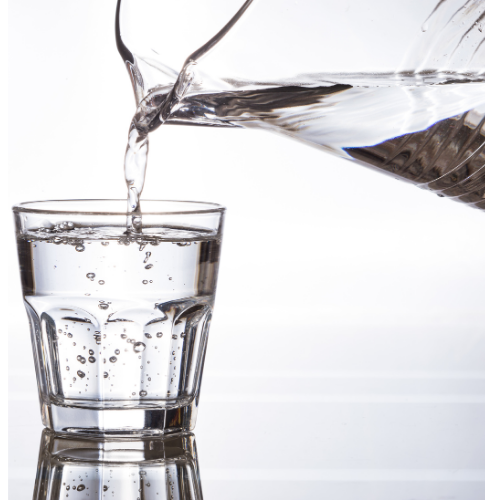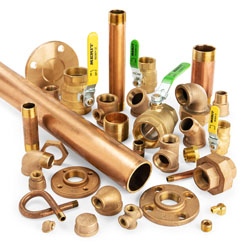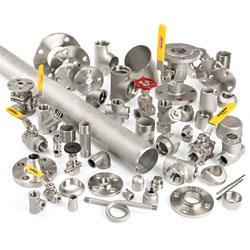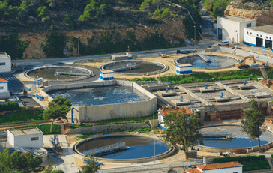Municipal Systems
The municipal industry focuses on building an infrastructure that provides safe water, a sustainable waste management system and an infrastructure (schools, hospitals, police & fire stations, gas, etc.) to support growing populations and demand.
 Merit Brass’ high quality products are manufactured & procured with ASTM and ASME specifications as a focal to ensure safety and consistency because we understand how important these factors are to municipalities. From the initial flow of water through to its distribution, it’s extremely important that the products used to transport water are durable and safe. We believe in keeping all our homes, businesses, and communities clean which is why customers trust our products to be used throughout the municipalities.
Merit Brass’ high quality products are manufactured & procured with ASTM and ASME specifications as a focal to ensure safety and consistency because we understand how important these factors are to municipalities. From the initial flow of water through to its distribution, it’s extremely important that the products used to transport water are durable and safe. We believe in keeping all our homes, businesses, and communities clean which is why customers trust our products to be used throughout the municipalities.
Municipal Water Distribution
The municipal water distribution system is comprised of components designed to carry water from the main water supply network to home water supply networks. The components of each municipal water distribution system consist of pipelines, pumps, water storage facilities, and additional distribution accessories.
The main purpose of the municipal water distribution system is to distribute quality water into homes with sufficient pressure and flow rates. There are four major types of a municipal water distribution system: dead-end, grid iron, circular (or ring), and radial.
WHAT ARE THE DIFFERENT TYPES OF WATER DISTRIBUTION SYSTEMS?
Municipal Treatment Process
Before water is pumped into our homes and businesses, it is withdrawn from a water source such as ground or surface water which goes through a treatment process. The water treatment process includes several stages of filtration and disinfection.
Filtration will remove suspended particles, debris, and algae. Disinfection will remove any remaining bacteria and viruses therefore purifying the water.
Once the treatment process is complete, the municipal water systems distribute water through water mains which then transport the water into the water lines of our homes and businesses. There are several main components in a municipal water system including:
Water Source, which is where the water supply comes from (lake, reservoir, groundwater, rainwater, etc.)
Water Treatment & Purification Facilities, use different systems to purify the water depending on the source of water supply
Water Distribution Systems, transmit the water to end users from its source through water mains and sub mains
Storage Systems, house water in reservoirs, water tanks and water towers
Pumping Stations, have pressurizing components that maintain optimal water pressure
Accessories, assure the end users that the water supply will be transported smoothly & safely through pressurized systems by using valves, generators, meters, service lines and fire hydrants

Brass in Municipal Systems
The brass alloy is most used throughout municipal water distribution systems. Not only does brass provide excellent corrosion resistance from water and heat, but it resists attacks from salt water, acids, minerals, and peaty soils contained in water. It also enhances the efficiency of water delivery lines in homes.
Brass is extremely malleable which allows for liquids and gases to easily flow through the pipeline. It’s also versatile because of its availability in many different shapes, sizes, and widths for numerous types of projects. Brass is very tolerant of high temperatures and provides great durability, keeping mains in great condition for years providing longevity.
For potable water applications, lead-free brass is used because it contains no more than 0.25% lead which protects consumers from harmful contamination. Lead-free brass replaces the lead with silicon, bismuth, or mixed copper alloys. There are no tracks of contamination in lead-free brass as the manufactured materials must be isolated and handled separately.
Lead free brass conforms to NSF61-G which complies with lead-free requirements of the U.S. Safe Drinking Water Act (SDWA). It also requires leachate testing to ensure products do not add lead or any other contaminants to drinking water that could cause adverse health effects. It’s certified <=0.25% weighted average % lead.
EXPLORE OUR LEAD-FREE BRASS PRODUCTS

Stainless in Municipal Systems
In addition to brass, stainless steel has been used throughout the municipal water distribution industry for over 30 years. Stainless steel not only offers excellent corrosion resistance from hundreds of industrial and chemical solutions or mixtures but maintains the cleanliness of the product being transported. It has been demonstrated over the years through rig tests that stainless steel maintains the purity of water.
Due to its strength and ability to hold up to extreme temperatures, both high and low, stainless steel continues to grow in popularity throughout municipal water distribution. Stainless steel can last an extremely long time in drinking water applications without the need for replacements because there is no need for any protective coating and requires very little maintenance.
Not only does stainless steel provide longevity, but it also maintains a lustrous appearance for a long period of time.
EXPLORE OUR STAINLESS STEEL PRODUCTS
What is Wastewater in Municipal Systems?
Wastewater is used water which includes substances from rainwater, runoff, and various pollutants from the street to everything flushed down toilets and rinsed down drains. Wastewater must be treated before it can be released into another body of water to prevent further pollution and contamination of water sources.
Wastewater Collection Systems are comprised of underground pipes, force mains, pumping stations, tanks, and more to gather wastewater from residential and non-residential applications and convey the flow to a wastewater treatment plant.
Wastewater Treatment Systems are made up of several technologies to remove unwanted particles, pathogens, chemicals, metals, and solids. While some treatment processes vary, most wastewater treatment processes include the following steps: coagulation, flocculation, sedimentation, filtration, disinfection, and distribution.
Common Products of Merit Used Throughout Municipal Water Distribution
Corrosion Resistant
Durable
Malleable
.png)
Heat Conductor

Versatile